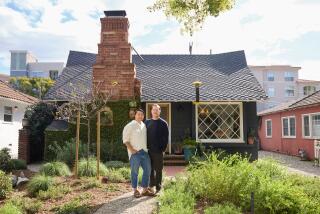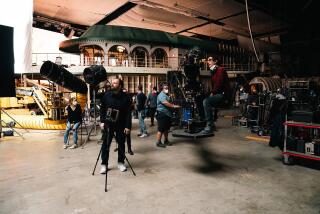Doing Charleston Properly, With Style and Flair
CHARLESTON, S.C. — It was rumored that Gen. William Tecumseh Sherman decided not to burn Charleston on his march to the sea because his mistress was a lady who owned one of the gracious plantations on the outskirts of that city.
Romantics and photographers should be forever grateful to the passion that motivated Sherman to spare Charleston with its antebellum houses along the Battery and the ancient live oaks draped with Spanish moss.
The city is a visual delight to photographers interested in carefully tended gardens and architectural detail. Walking through the sometimes narrow cobblestone streets is an adventure through history.
Architectural photography with a 35mm single lens reflex requires some special knowledge and in some cases a special PC (perspective correction) lens.
Linear Distortion
Frequently, linear distortion in a picture of a building can be a problem. Tilting a camera up to include the top of a house or building will result in a picture where the structure appears to be leaning backward. This can be overcome if it is possible to back away far enough from the house to hold the camera level to the horizon.
When shooting a house on a narrow street, however, it may be necessary to use a very wide angle lens or a PC lens. The latter has a shifting element that can be raised to include the top of a building. In such cases a tripod can be helpful for precise composition.
A flower garden can be an important element in a photograph of a house. We often mount our cameras on tripods and use a 24mm wide-angle lens to include a spot of brilliant color in the foreground. Usually we focus on the house and let the colorful flowers close to the camera be marginally out of focus. If you want to have both the flowers and house sharp, focus on the flowers and use a small aperture.
Photogenic House
One of the most photogenic houses in Charleston is the Two Meeting Street Inn, a lovely Queen Anne mansion where you can book a room if you make your reservations well in advance. We did not have the pleasure of staying at Two Meeting Street, but we did photograph the gardens, the veranda and the sitting room filled with antiques. The room rates are quite reasonable and start as low as $40 a night. Phone (803) 723-7322.
The old slave market in the downtown area of Charleston has been converted for selling crafts and souvenirs. Inside you will need flash or high-speed color film, but outside on the sidewalk, women spread their woven baskets in the sun. One woman decorates straw hats with brightly colored artificial flowers while you watch.
Another kind of photographic experience is at Wild Dunes on the beach near town. This barrier island abounds with wildlife. Deer roam through the pine woods and palmettos. Large alligators doze on the edge of the golf course and lagoons. The wide sand beaches host a multitude of sea birds and the salt marshes are home to egrets and herons.
Preserved With Great Care
The natural beauty of the island has been preserved with great care. It is hard to believe that you are on the grounds of a posh tennis and golf resort and within minutes of downtown Charleston.
Our golf is so-so and our tennis only slightly better, so we chose to explore the island photographically, taking long walks on the beach and along the edge of the salt marsh. In the early morning the sun tinges the world with a golden glow. We were entranced by the beauty of the live oaks, gnarled and gray-bearded with Spanish moss as they stood like ancient patriarchs reflected in quiet lagoons.
A photographer on foot can be overwhelmed in the midst of 1,600 acres of natural beauty. We wanted mobility, but many parts of the barrier island could not be reached by car. The solution was an electric golf cart that enabled us to put our heavy camera bags in the back and go cruising along the edges of the fairways.
These carts are not always available during peak golfing hours, but can often be had free to non-golfers at the pro shop of the golf club, especially between 3 and 4 in the afternoon when the light is best.
A circuit of the two major golf courses at Wild Dunes will take you past some of the most photogenic areas on the island. In case golf carts are not available, the same paths can be covered on rental bicycles. A bike with a baby seat on the rear provides a place to carry your camera bag.
Catching Creatures on Film
During our excursion in the golf cart we discovered nesting herons and a sleepy alligator on the sunny bank of a quiet lagoon. The wildlife on the island tends to be shy, and so catching these creatures on film required patience and a 200mm telephoto lens.
On one fairway we discovered a fine gossamer quilt of spider webs spun across the surface of the closely mown lawn. The late afternoon light made this layer of threads look like a silver mantle. A zoom lens with a 28mm to 85mm range and a micro setting allowed us to move in very close and capture the tiny spiders on film.
We talked to coastal manager Tracy Tevington and learned that the preservation of the ecological balance on the barrier island is the result of a thoughtful environmental program and considerable effort.
Tracy has personally planted 600 sprigs of American beach grass to help build the dune line and prevent erosion. She has installed more than a thousand feet of sand fence to hold the sometimes shifting dunes. Wild Dunes offers nature walks and canoe safaris for visitors during the warmer seasons. For information write to Wild Dunes at P.O. Box 1410, Charleston, S.C. 29402-1410.
More to Read
Sign up for The Wild
We’ll help you find the best places to hike, bike and run, as well as the perfect silent spots for meditation and yoga.
You may occasionally receive promotional content from the Los Angeles Times.






